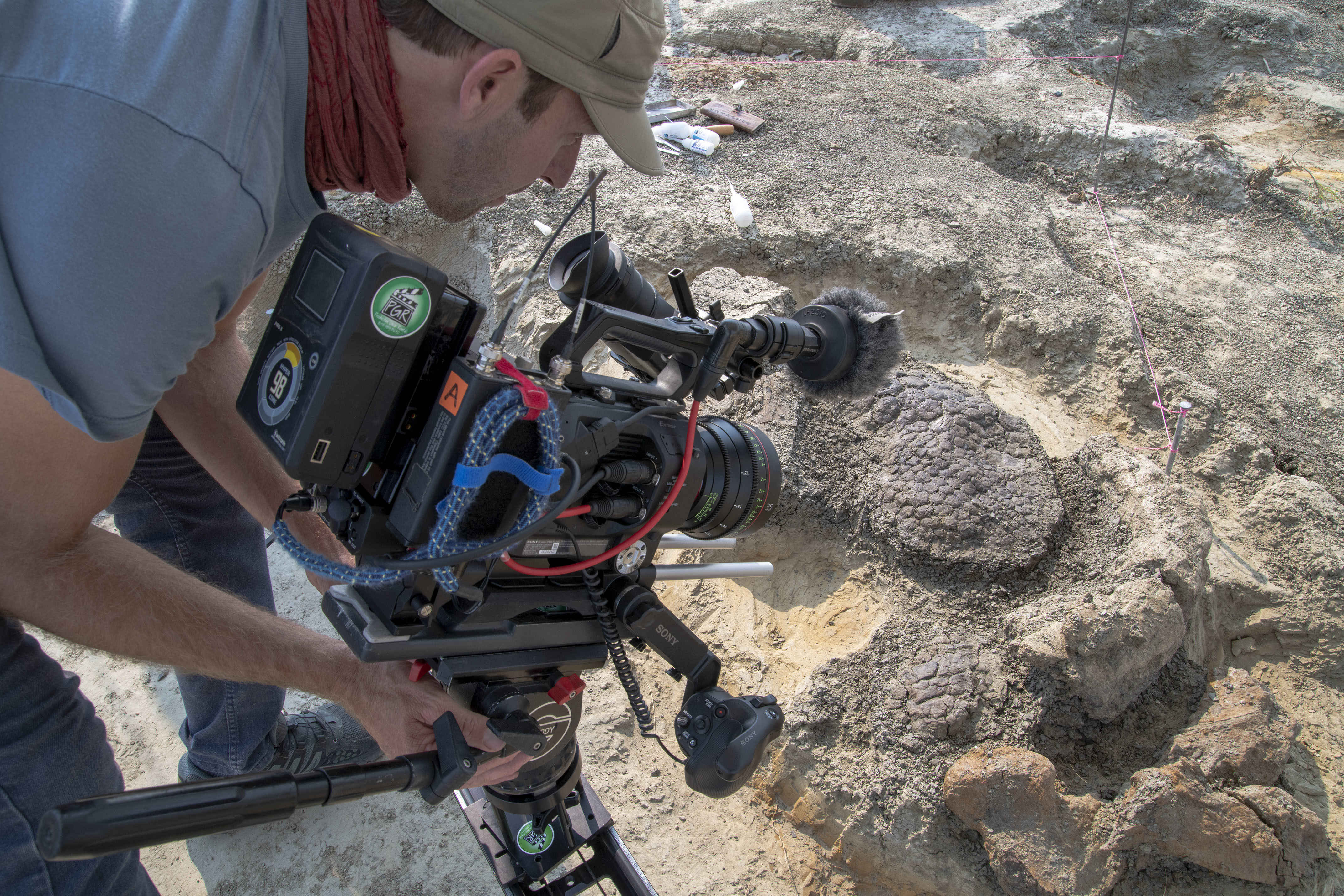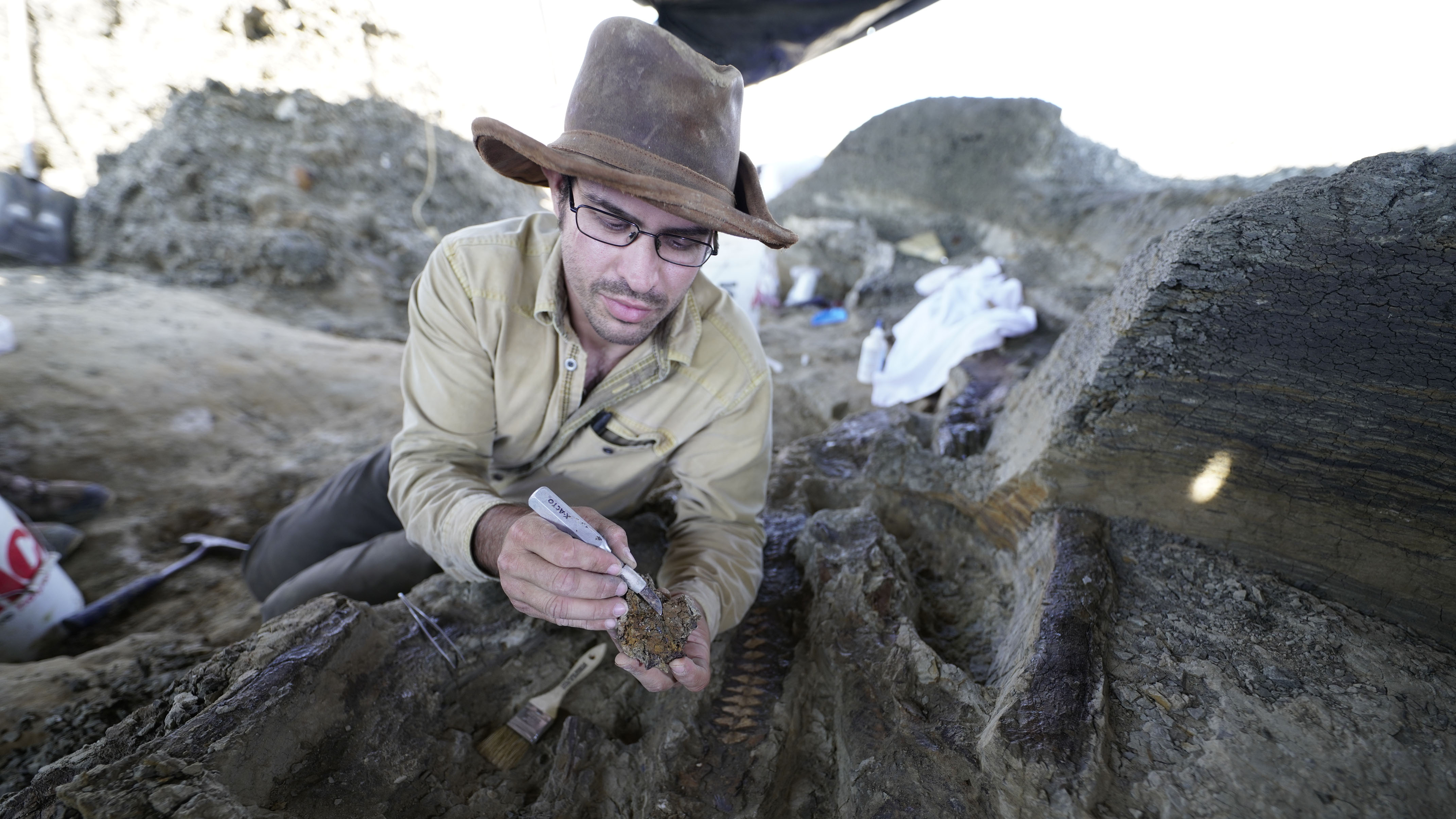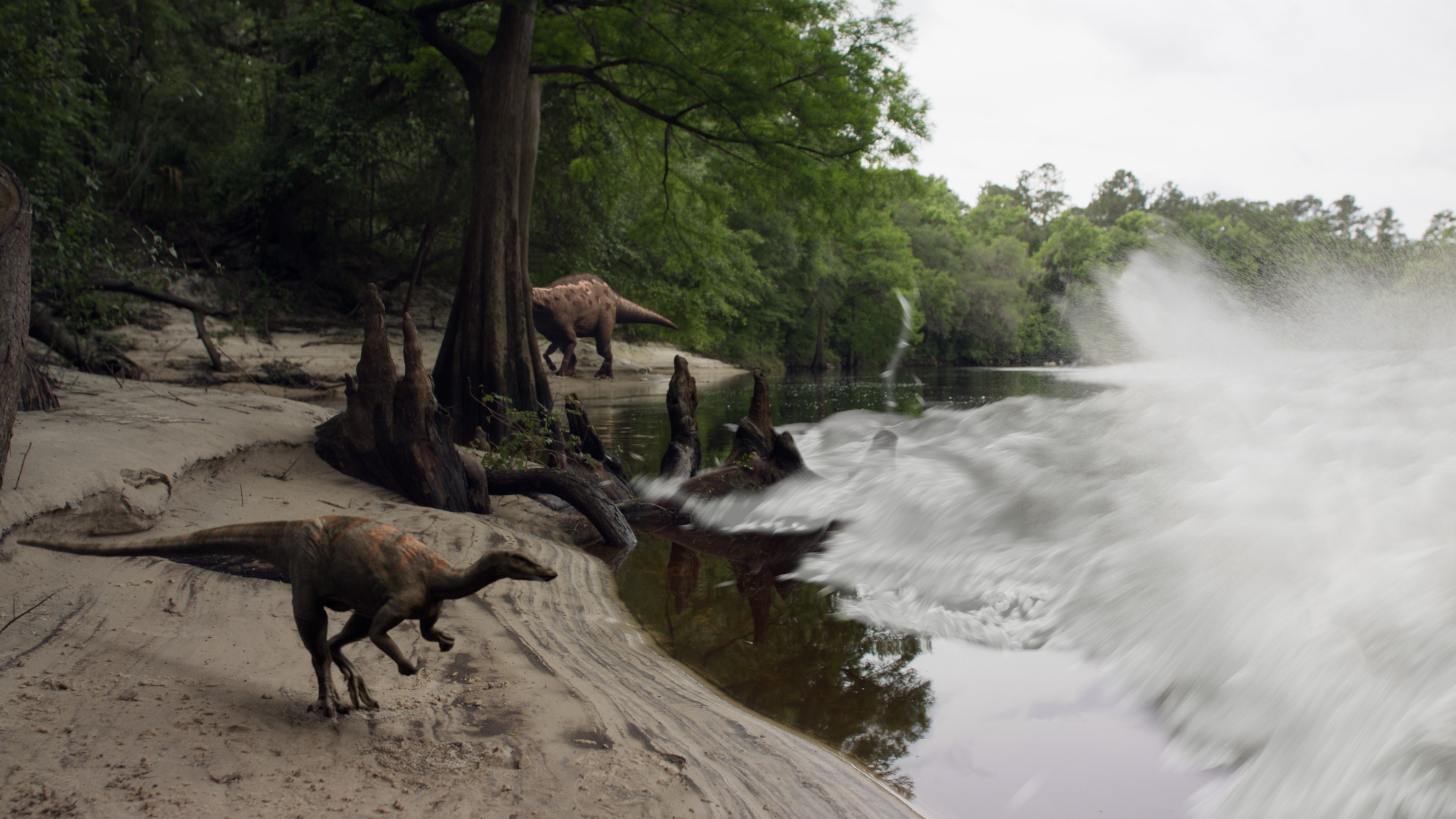
Behind the scenes. Ian Kellett on location in Tanis filming the Triceratops skin whilst still in the ground. /BBC
Behind the scenes. Ian Kellett on location in Tanis filming the Triceratops skin whilst still in the ground. /BBC
Scientists based in the U.S. have presented a remarkable discovery - an extraordinarily well-preserved dinosaur leg, complete with skin.
The finding is one of many from the Tanis fossil site in the U.S. state of North Dakota.
But it's not just the stunning preservation that is causing excitement. Scientists claim that the animal was killed on the very day an asteroid struck Earth 66 million years ago.
READ MORE
The trouble with birch pollen
Who will be France's next President?
Bucha killings: The evidence
The ensuing mass extinction erased about three-quarters of Earth's species, including the dinosaurs, at the end of the Cretaceous Period. That paved the way for mammals - eventually including humans - to evolve and become dominant.
The scientists' claims are already causing a stir in the paleontology world, and are likely to face close scrutiny in academic journals. They are set to be documented in an upcoming BBC documentary narrated by broadcaster and natural historian David Attenborough, titled Dinosaurs: The Final Day.

A screengrab provided by the BBC of paleontologist Robert DePalma. /BBC
A screengrab provided by the BBC of paleontologist Robert DePalma. /BBC
Springtime 66 million years ago
Researchers at the Tanis site determined that it was springtime at the location and throughout the northern hemisphere, including the spot where the asteroid struck, off the Yucatan Peninsula in Mexico.
They base this on examinations of bones from three paddlefishes and three sturgeons that died within around 30 minutes of the impact that occurred 2,200 miles (3,500 km) away.
They found evidence that a hail of glass pelted the site. Finding spherules (tiny droplets of molten and vaporized rock), forged by the impact, embedded in fish gills.
The Tanis fossils indicated a vast standing wave of water swept through after the impact, burying the creatures alive. The fossilised leg has been analysed by one British scientist quoted by the BBC as belonging to a Thescelosaurus, a 3.5 metre (11.5 feet) plant-eater.
Melanie During, a paleontology doctoral student at Sweden's Uppsala University and lead author of the research published in the journal Nature, stated that "every living thing in Tanis on that day saw nothing coming and was killed almost instantaneously."

An artwork of the water surge buried all the creatures at Tanis. /BBC
An artwork of the water surge buried all the creatures at Tanis. /BBC
Source(s): Reuters

